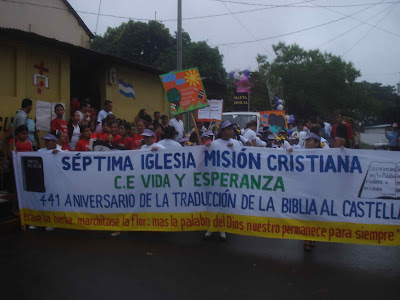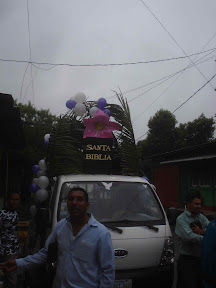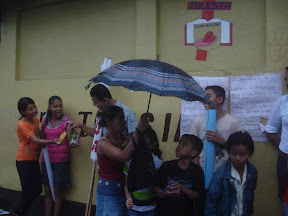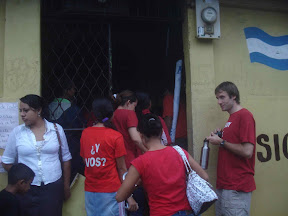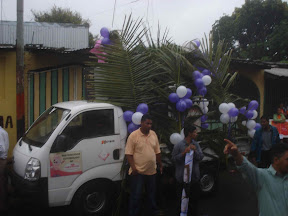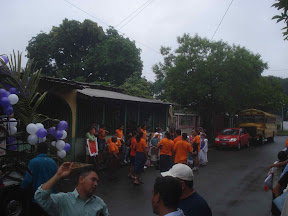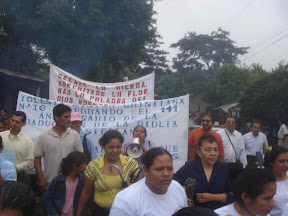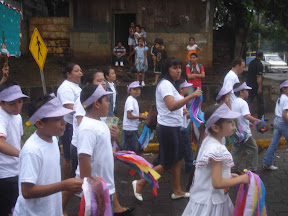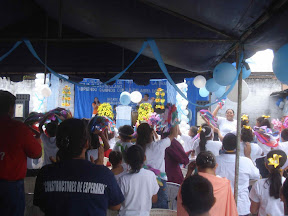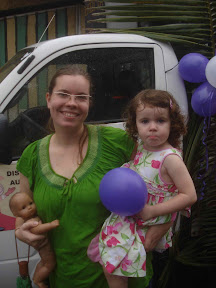She did have some trouble our first couple weeks, mainly because a) she was frustrated that everyone spoke Spanish (she would yell at us when we spoke Spanish to other people) and b) she didn't have many kids to hang out with. But it did not take long before she accepted that all of our new friends speak Spanish. At first she asked every time we met someone, "Does this friend speak Spanish?" but just yesterday she was talking about her cousin Grace and said "She's my friend. But she doesn't speak Spanish."
Watching her start to learn Spanish has been really quite amazing. I still expect that sometime in this first year, she will be rattling it off while I am still struggling to form sentences and learn verb forms. The first thing she mastered was "¿Como se llama?" that is "What's your name?" and she would proudly ask each taxi driver, sometimes even remembering to respond correctly "Me llamo Quinn." A few weeks after we got here, she was explaining to me that "¡Que linda!" (how pretty) meant something like "Nice to meet you." -- because almost everyone who met her for the first time had the same response. Just a couple weeks ago, she told me "Enrique" means girl and "Pa" means "boy," only to decide that she had it backwards. Luis Enrique and Paula Elena are friends in her class, so I think that is the origin of those Quinn-spanish terms. Perhaps the most interesting thing is how we don't really know how much Spanish she knows, because she always speaks English with us but at school her interaction with her classmates is in Spanish.
Which brings us to... school! Perhaps the biggest development since our arrival in Nicaragua is that Quinn has started school. She's in preschool at a colegio that goes all the way through high school, and all the kids wear uniforms (this was the case in all the preschools we visited, whether or not they were part of a larger school). Every Friday, though, the preschool and kindergarten kids get to wear whatever they want, which Quinn really enjoys. Yesterday she chose a purple shirt and red shorts -- both of which she put on by herself, with great pride -- backwards. Here are the obligatory first day of school shots:


Yesterday was also the day she got her first report card! The "grades" were "Achieved," "In Development," and "Not Achieved." We were surprised to see some of the things she can do -- like name shapes in Spanish. We were not at all suprised that she sometimes has trouble following directions (not that she doesn't understand, but that she's sometimes willful). The teacher said "We know she's still a baby, she has lots of time to reach these goals." Her teachers, Teacher Tanya and Teacher Rosita (which usually comes out "Teacher'Sita" when Quinn says it), are warm and loving, and look out for Quinn a little extra since she's still adjusting to the language and is the youngest student in the class. They can do this because she is one of only seven kids in her class.
In her free time, now that her parents got some wheels, Quinn has been venturing outside Managua to see some of the sights. A couple weeks ago, we went to Volcan Masaya, about a 20 minute drive south of Managua. You can drive up to the lip of the crater and climb stairs to a high point and look down into the smoking crater. Quinn was very excited about "the tall mountain." Dora the Explorer, one of her current cartoon idols, has lots of adventures, and they frequently involve tall mountains (or, you know, going to the highest hill). So, Quinn was very excited about having an adventure that involved climbing a tall mountain. She took issue, however, with our description of a volcano as a tall mountain with a hole in the top. Because we were able to climb up high and look down at the crater, she kept talking about how "the tall mountain doesn't have a hole at the top."

Climbing the mountain

Yay volcano!
For those of you who might have concerns about her hygiene or comfort, she is the only member of our household who regularly gets a hot bath.

Yes, this does involve boiling water. :)
And, to wrap up this Quinn update, here are some of her latest dance moves:
We think she's feeling at home here.

